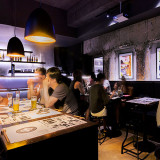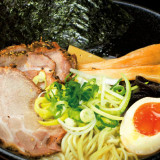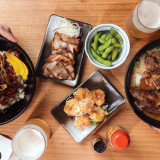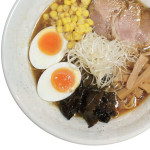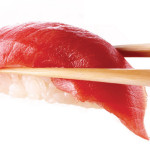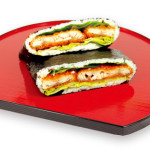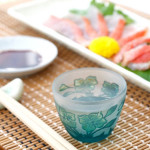
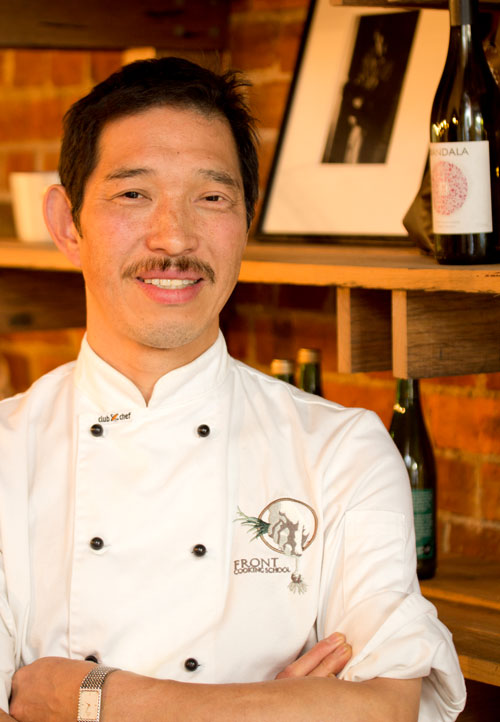
How has Japanese cuisine evolved here over the years?
It started out very small. The first restaurants were just run exclusively by Japanese chefs and there weren’t many of them. What really helped push Japanese food in Melbourne was a combination of social and economic factors.
First, a lack of Japanese workers in Melbourne itself (non-existent language schools and a need for farm stay workers incountry areas kept them away) meant a lot of non-Japanese Asians learned the craft.
Secondly, you had the 80s Japanese economic boom. This meant many Japanese came here as tourists and wanted to eat Japanese cuisine while on holiday. Of course, with so many tourists, you would inevitably have people trying to start their own Japanese restaurants, and many were those were started by the non-Japanese Asians who had worked under Japanese chefs beforehand.
Thirdly, this critical mass of restaurants gave us buying power. When I first arrived in Melbourne, it was impossible to get the ingredients you needed to make Japanese cuisine properly. Why would an importer take a risk and bring in a small quantity of an ingredient that may or may not sell? After the 80s boom and with the rise of non-Japanese-run restaurants, not only did we have the numbers, we also had distribution networks we never could have had otherwise – namely the Chinese suppliers.
Of course, easing of government immigration and trade restrictions helped, too.
The reasons above are why we should never be discriminatory when describing the non-Japanese-run scene here. Without these Chinese, Korean, Singaporean and Thai-run restaurants, we would never have been able to get Japanese food off the ground. Even if we had the ingredients, there were too few Japanese chefs in the past to promote the cuisine adequately.
The traditionalists can complain all they like, but that’s the truth. And let’s not forget, it was only when non-Japanese chefs came on board and brought in new and interesting types of sushi that non-Japanese people got interested and the real sushi boom we have today came into play, too.
Plus, it’s not like this was ever a bad thing for ‘authentic’ Japanese cuisine. Food goes in waves. You start out with very traditional Japanese food. Then a whole lot of others come in and change it all, getting more people interested. But after a while, these new customers start wondering what the original tasted like. So they go back to the Japanese-run shops.
Who within the Japanese-owned restaurant community here has been most responsible for its promotion over the years?
It’s definitely those who have been doing it from the start and haven’t given up. Such restaurants are amazing, in my opinion. Take the oldest continuous running one – [former employer] Teppanyaki Inn – for example. It opened in 1975 and offered Teppanyaki as it was about the only Japanese cuisine you could do with ingredients available at the time.
As for others, Akita is also another truly influential restaurant. If you ask why, it’s because the owner is so well known that people flock to see what the fuss is about. Kenzan and Kuni’s are also very established and respected.
What is the future of Japanese food here in Melbourne?
Specialising is the way forward. There are now too many Japanese restaurants serving the same thing. By trying to be traditional, you end up limiting yourself. You need to promote yourself with something you feel confident in.
The good thing is people are changing things a little, trying new things and playing around with fusion. These changes and experiments all add colour to the dishes, and show a chef’s individuality.
Tetsuya’s is a great example of how I think Japanese food should go in the future. He became the most famous Japanese chef in Australia by doing his own thing.
As for other trends, the next big things in Japanese dining in Australia will be the izakaya (eating pub) and the sake bar. Australians love drinking, so to have small plates of Japanese food served to match the drinking experience will be perfect.
What about ownership? You said non-Japanese ownership helped promote the cuisine before. Will it continue to do so?
The future will be Australian-owned. One of the primary reasons even the best Japanese restaurants don’t get reviewed by The Age and so on is their service. Japanese staff, while excellent in terms of a sense of authenticity, don’t have the language skills to serve Australian customers properly. They can’t explain the food.
Just look at Ocha in Kew. It’s the only Japanese restaurant to win hats from The Age Good Food Guide over the past 10 years or more. And what do you notice when you walk in? All the staff are Australian. The owner and chef may be Japanese, but that’s it.
What’s the best way to enjoy Japanese food?
The best way is to ask the chef what their best dishes are. Don’t go just choosing whatever’s on the menu. The standard dishes at most Japanese restaurants won’t be that different between establishments. Ask for what’s special. By doing this, not only will you be getting the food the chefs most want to present, you’ll also be likely getting the freshest ingredients. Plus, the chef will also be pleased they get to serve the dishes that express who they are as people.

